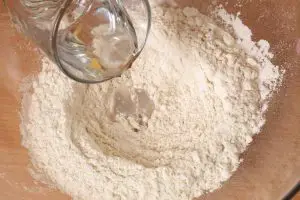Sourdough Bread vs. Ciabatta Bread: What Is the Difference?
When it comes to bread, a lot of people don’t realize just how many different bread types there are. Of course, most people are used to seeing their standard white bread and sometimes whole-wheat bread in stores, and they may consider sandwich bread as well, but there are countless different breads beyond these few. When one first gets into the idea of making bread, one of the most notoriously finicky breads to work with is sourdough bread.
Sourdough bread tends to be a little bit problematic when you are trying to make it on its own, and because of this, novice bread makers may have some trouble with it. If you are curious about making a bread similar to sourdough but you do not have the patience to try and wrestle with sourdough bread, you may want to consider opting for ciabatta bread.
Ciabatta bread, while not as well known as sourdough bread, shares a lot of similarities with it and tends to be one of the first results to consider when you are searching for bread similar to sourdough. This bread type is also extremely popular for sandwiches, making it a wonderful choice if you don’t want to try to deal with sourdough bread on your own. In order to best understand what place ciabatta bread has and how it compares to sourdough bread, you first have to have a good understanding of where both of these breads come from.
What Is Sourdough Bread?
One of the most well-known aspects of sourdough bread is that tanginess that it has to its dough. After all, this is where it gets its name from, as the dough can come across as somewhat sour. This comes from the most complicated step of trying to make sourdough bread, which is the specific starter that contains both live and wild yeast culture that will help give the sourdough bread its name.
You cannot make true sourdough bread without the specific starter for it, as you will just end up with other forms of bread and you will not get that sour tang to it that people want out of their sourdough bread. Getting the live starter is the crux of making sourdough bread into the treat that it is.
What Is Ciabatta Bread?
This bread type is not as well known to people, but that has nothing to do with how good it can be for sandwiches. The name of the bread, ciabatta, comes from the Italian word for “slipper,” which refers to the flat and long shape of the bread loaf, which can resemble a slipper. This bread is highly popular in Italy, though it is a relatively modern form of bread with it only first being made around the 1980s.
As for making the ciabatta bread, you are going to need a high-gluten wheat flour and the dough often ends up being a bit wetter in texture due to the added olive oil. Depending on the recipe that you choose to follow, it will also require a starter similar to sourdough bread, but you don’t have to worry because the starter doesn’t ferment for nearly as long.
How Are the Two Breads Similar?
Now that you have a good understanding of what sourdough bread is and what gives it its characteristic name, you are going to want to get a good sense of why ciabatta bread is a good alternative for when you do not have the time to let the starter ferment for as long as sourdough bread tends to need it to. In terms of similarities between ciabatta vs sourdough, there are quite a few to consider. Both are popular Italian breads that are most commonly used in sandwiches. Both of them can be made with a starter that requires live and wild yeast. Both have a crisp crust that many people enjoy with the softness of the bread.
If you make use of the starter for ciabatta, then both of the breads will have a bit of a sour tang to them, though sourdough bread will be more pronounced. If you do not have the enormous amount of time required to prepare a sourdough starter, ciabatta (both with and without its own starter) can be a wonderful alternative.
What Are the Differences?
Now that you understand how these breads can be similar and can fulfill the same purposes, you will also want to get a sense of what makes these breads different. One of the differences between these breads is that ciabatta, both with and without its starter, make use of olive oil to help flavor the bread slightly. This flavor is fairly mild, but it is enough to set it apart from other breads, such as the baguette that it was designed to compete against.
The biggest difference is that even with the starter for ciabatta bread, sourdough bread takes considerably longer to make. Sourdough bread tends to take between 24 to 48 hours to prepare, not including the time needed to develop the starter. You need to allow for the bread to rise properly and allow for the bread to rest. By comparison, with the starter for ciabatta bread, it only takes around three hours for the bread to be prepared. Sourdough bread also takes a lot longer to actually bake compared to ciabatta bread, with it coming in at around 45 to 50 minutes versus the 25 minutes that ciabatta bread (with and without the starter) requires.
The taste of sourdough bread is also far more pronounced than in ciabatta bread with the starter. Sourdough bread, as the name would imply, is more noticeably sour. Ciabatta bread with the starter only has a very slight tinge of sourness to it, and ciabatta bread without the starter has no sourness and a mild flavor from the olive oil.
Both breads absolutely have their places as sandwich breads, and ciabatta with the starter can be a great alternative for a milder sourdough bread when you do not have the time, space, or dedication to try and raise the starter that sourdough bread typically requires. Ciabatta bread, while relatively young compared to some of the ancient bread recipes that are used today, most certainly has earned its place beside sourdough bread.






